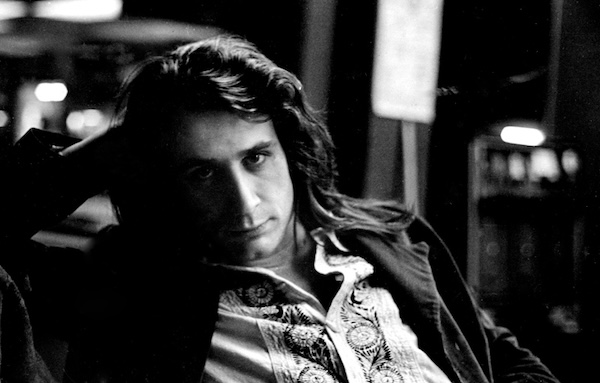
AADL Talks To: Peter Andrews

In this wide-ranging interview from 2010, Peter Andrews recalls his varied career producing and managing local and regional music talent — from managing the Scot Richard Case (SRC) band and bringing bands like The Who, Jimi Hendrix, and the Yardbirds to Ann Arbor’s Fifth Dimension club, to booking national acts for University of Michigan student groups. He also discusses his role in Ann Arbor’s legendary Blues and Jazz Festivals, producing the John Sinclair Freedom Rally at Crisler Arena in 1971, and bringing John Lennon and Yoko Ono to town.
Grande Ballroom: Detroit's Scene
Grande Ballroom: The Set
Blasts From the Past: Music in Ann Arbor, 1960s
In the late 1960s, in particular with the Ann Arbor Blues Festivals in 1969 and 1970, the blues were coming to town. Since Chicago is only a few hours drive from Ann Arbor, some of the Chicago blues greats were finding their way here.
I am feeling a little nostalgic. I just read the book on a friend of mine, the great blues guitarist-- “Michael Bloomfield: The Rise and Fall of an American Guitar Hero” by Ed Ward. Excellent book. I don’t blog much on my musical background, but I have one. Here is a little taste of that both in Ann Arbor and elsewhere.
AADL Talks To: Genie Parker
Genie Parker was the former "Minister of Foreign Affairs" for the White Panther Party, a leader in the Rainbow People's Party, and a candidate for the Human Rights Party in Ann Arbor's 3rd Ward in 1972. In this interview, Genie recalls life at the Hill Street commune where she lived from the late 1960s through early 1970s and reflects on the personalities of some of the people she lived and worked with, including Leni Sinclair, David Sinclair, artist Gary Grimshaw, and White Panther co-founder, Pun Plamondon.
AADL Talks To: John Sinclair (May 3, 2011)
In this interview from May 3, 2011, John Sinclair elaborates on the importance of Black culture and, in particular, the Black Panther Party, in the formation of both the White Panther and Rainbow People's Parties in Ann Arbor; as well as the more humorous and theatrical elements of their antics during those years. He also reflects on his brother David Sinclair, his ex-wife Leni Sinclair, White Panther co-founder, Pun Plamondon, and artist Gary Grimshaw.
AADL Talks To: John Sinclair (March 22, 2010)
In this interview from March 22, 2010, poet, author, and activist John Sinclair reflects on music in Ann Arbor - from the MC5, the free concerts in the parks and the Ann Arbor Blues and Jazz festival, to his specific memories of local clubs and musicians. He also talks about the influence of both the Beat generation and black music on his cultural and political awakening, the origins of the White Panther Party, and the importance of newspapers.
AADL Talks To: Hugh "Buck" Davis
In the late 1960s and early 1970s Hugh M. "Buck" Davis, a lawyer with the Detroit National Lawyers Guild, worked with Chicago Seven Trial lawyers William Kunstler and Leonard Weinglass to represent John Sinclair, Pun Plamondon, and Jack Forrest in Ann Arbor's CIA Bombing Conspiracy case. In this interview, Davis talks about his life as an unrepentant radical lawyer; the importance of Judge Damon J. Keith's famous "Keith Decision"; and reflects on the personalities of former White Panther friends and clients.
AADL Talks To: Leni Sinclair
In this interview, photographer and activist Leni Sinclair recalls the origins of the Detroit Artists Workshop and first Trans-Love commune in Detroit, and their strategic retreat to Ann Arbor following the Detroit Riots. She also talks about the groups' politicization as the White Panther Party and reflects on life at their Hill Street commune, including what led to its breakup in the mid 1970s.